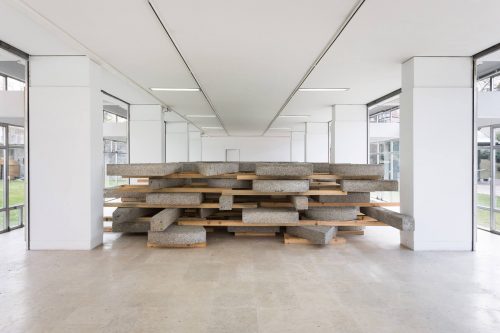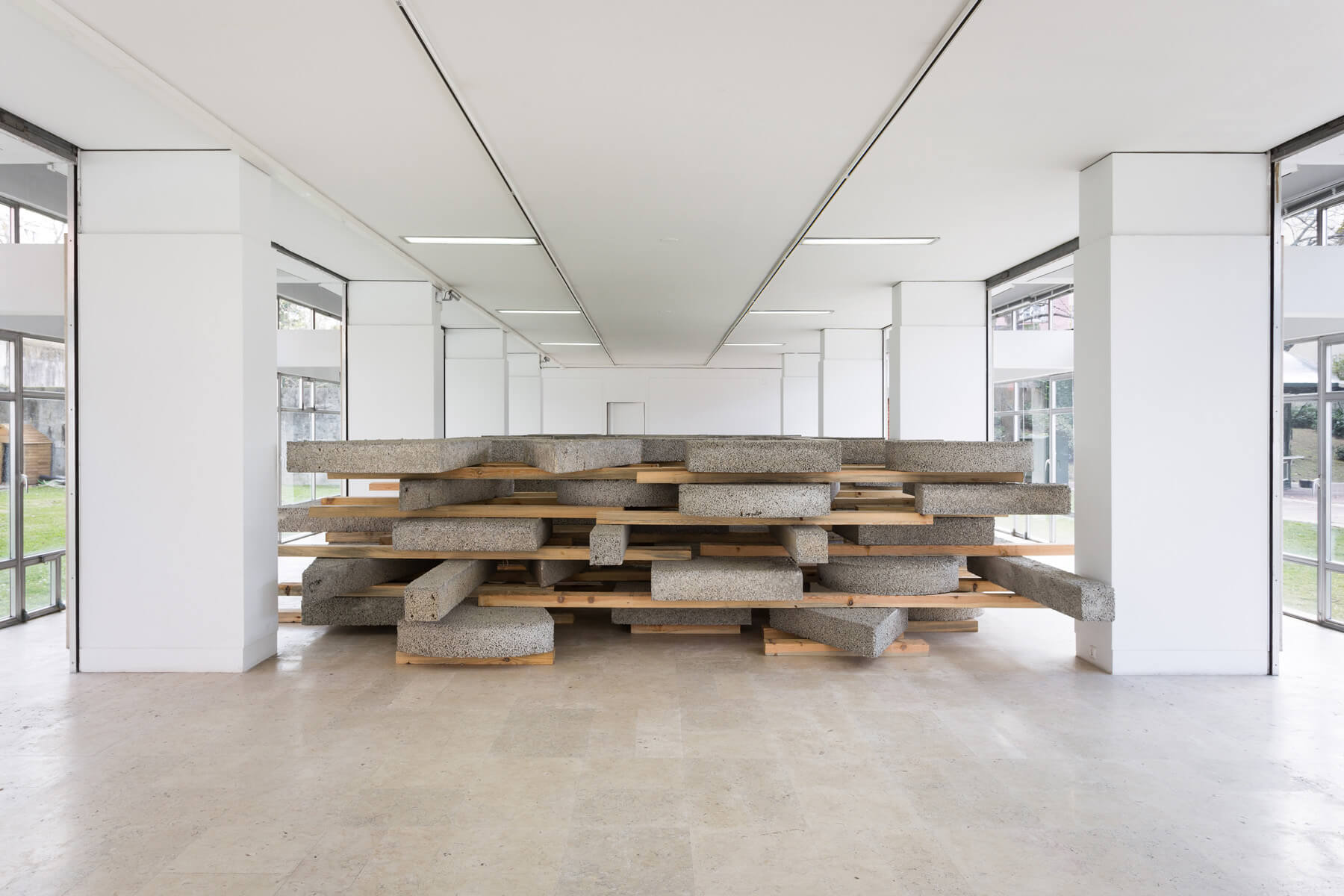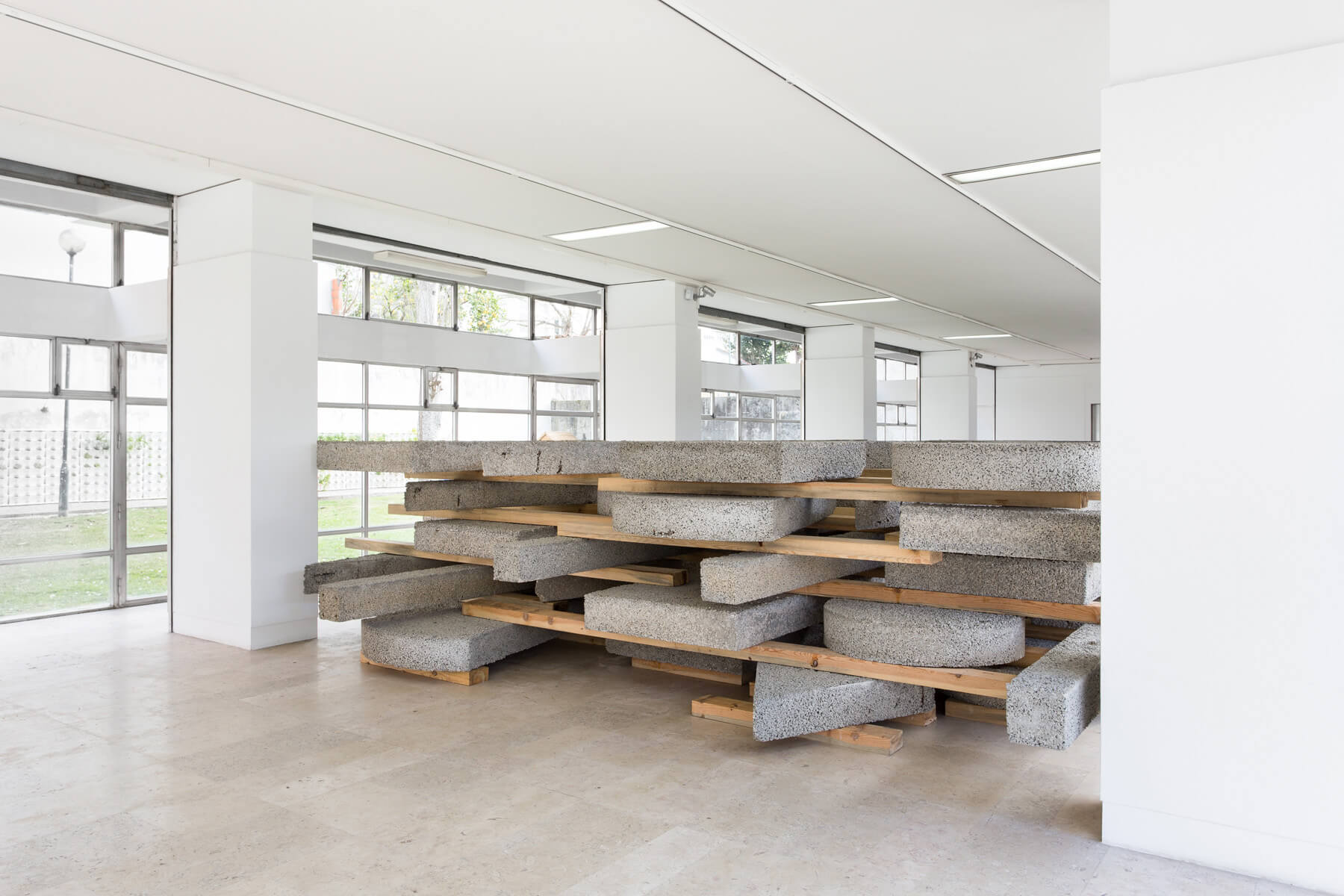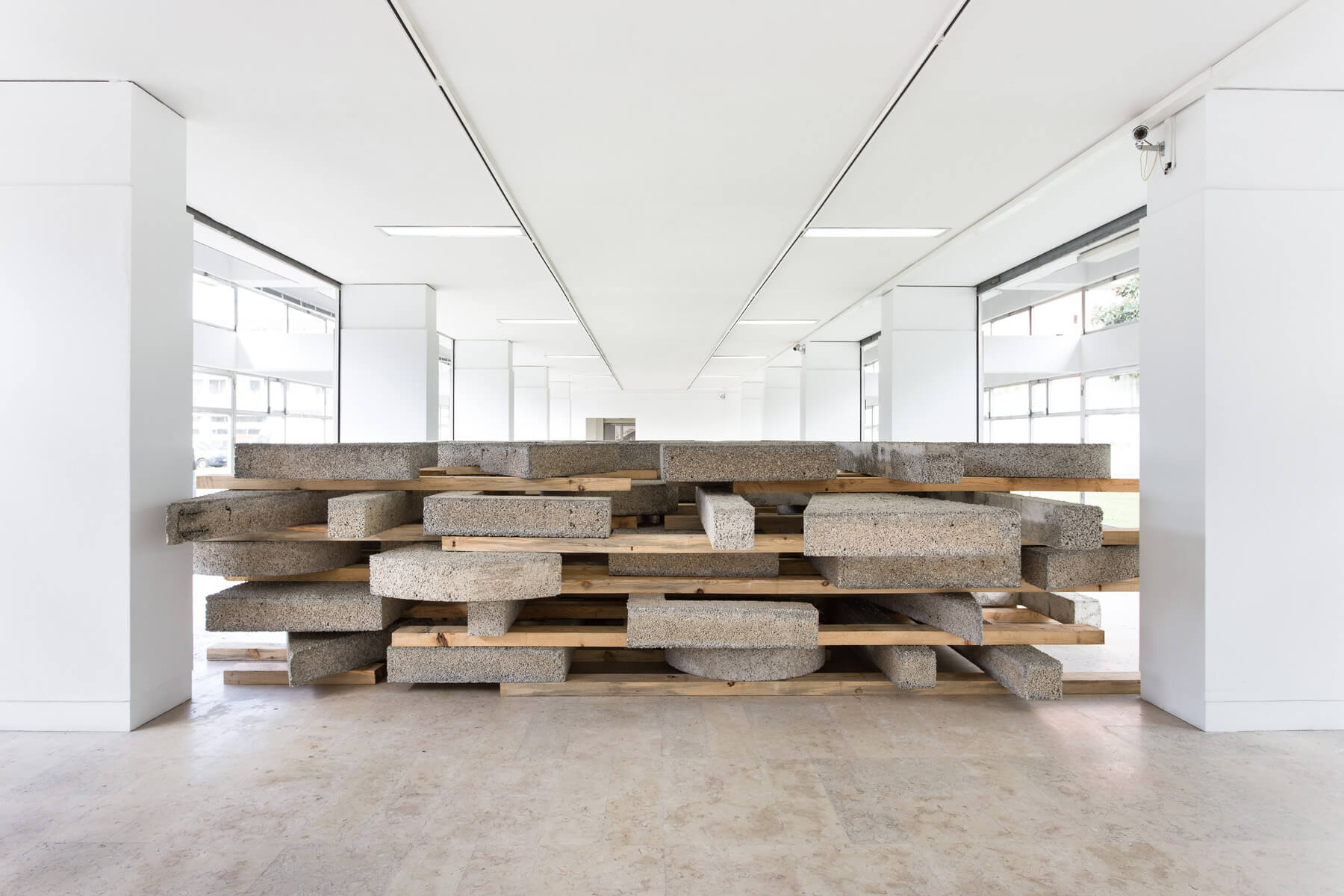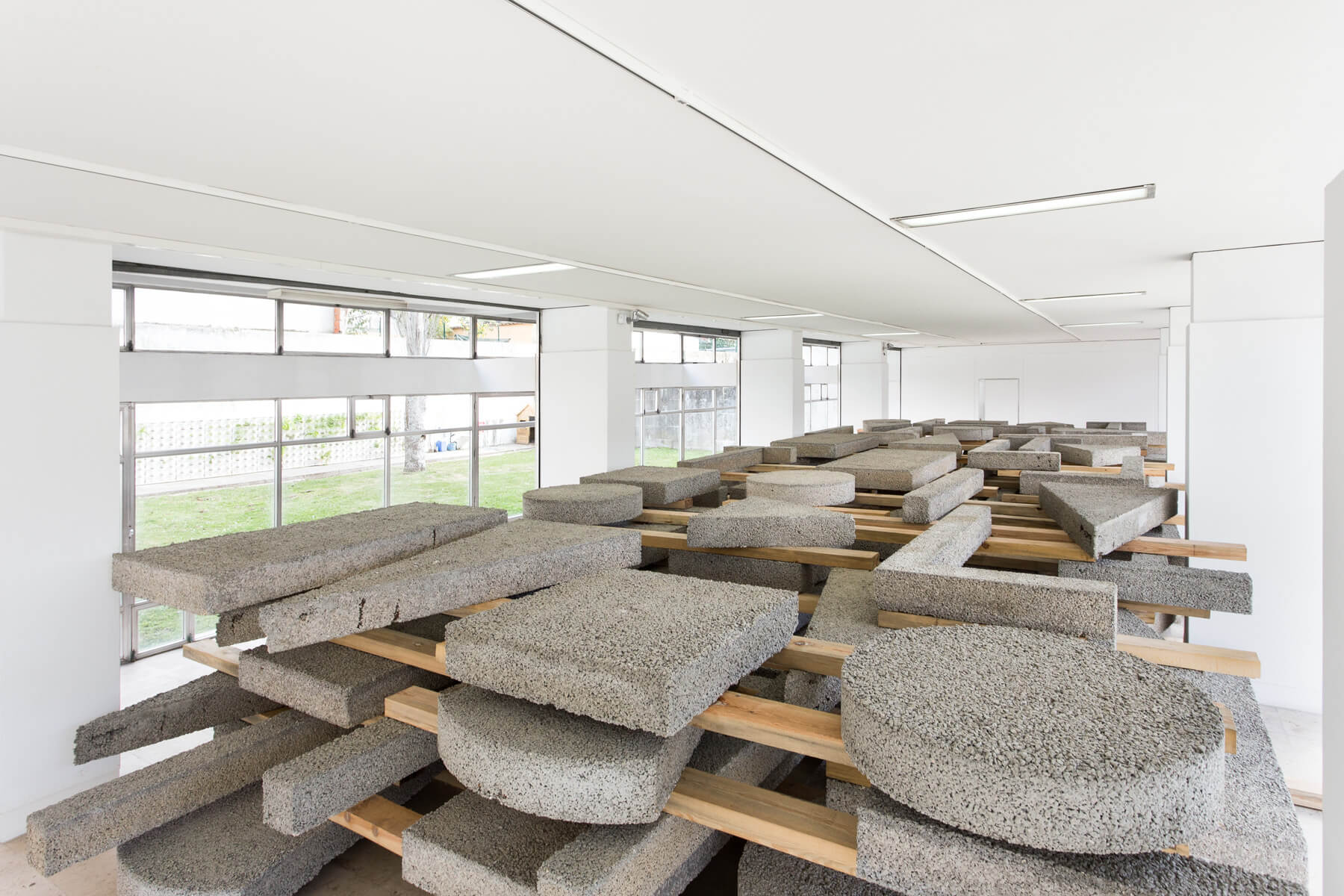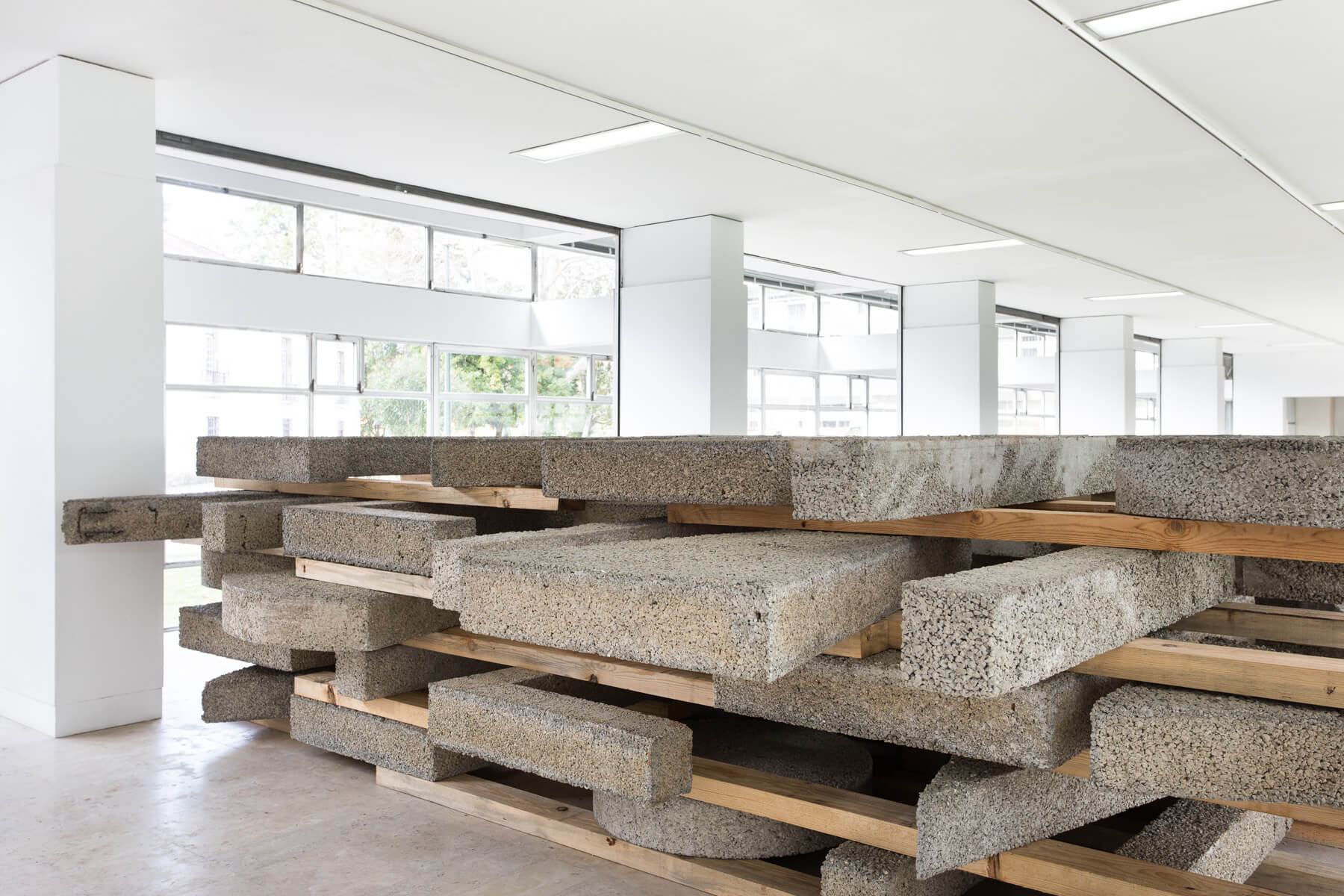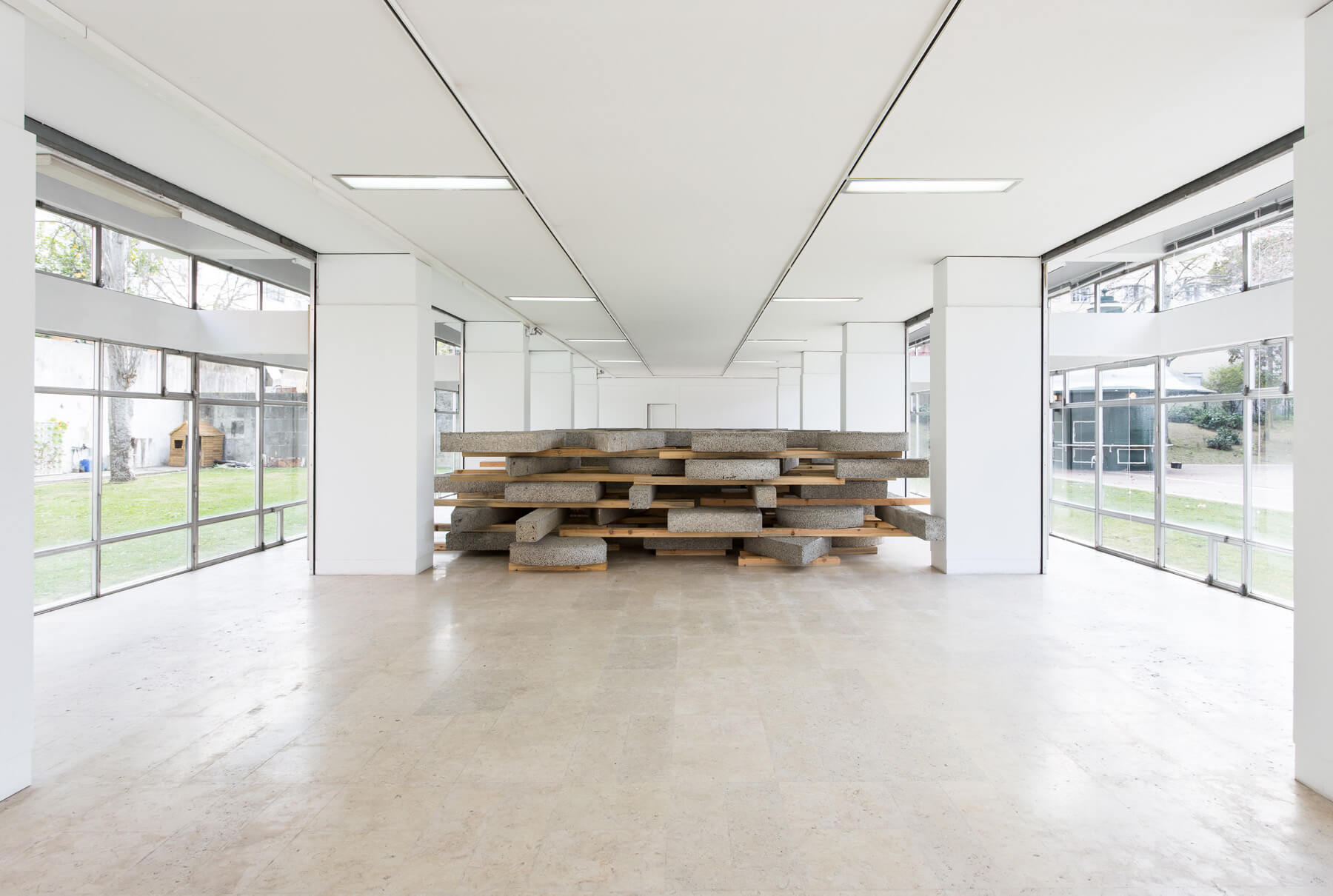– 14.04.2019
António Bolota’s exhibition is part of a programme related to the remodelling of the historic Quadrum Gallery, which reopened its doors to the public on 11 October 2018 and returned the original architectural transparency and breadth to the exhibition space, allowing it to establish a more dynamic relationship with the exterior and surrounding community. This remodelling has transformed the exhibition space into a long, empty nave with glass walls and illuminated by an oblique light, with the resultant absence of exhibition supports such as walls – absence that restraints the type of exhibitions that can be shown there. These constraints, however, are also extremely inviting for artists who, more than occupying space, seek to make use of it and its raw structural qualities as working material. The new line of programming aims to revisit moments, artists and paradigmatic exhibitions of contemporary art, seeking to reflect on how certain concepts or ideas continue to operate today. It was thus necessary to involve artists who could cope with the structural nakedness of this space, now emptied and reduced to its minimal elements – a somewhat daunting challenge. And there is no one better for this than António Bolota, whose work is conceived as part of a triangular grammatical relationship played out between architecture, the engineering of construction and sculpture, demonstrating how the space can be approached, occupied, enhanced and revealed on its own terms, limited only to what is essential.
Committed to the radical spirit of this framework, António Bolota produced a raw artistic intervention within the space. This intervention consists of revealing a grammatical lexicon related to sculpture and construction, making it central and unified and thereby producing a phenomenological and peripatetic experience that requires the viewer to move through the extremes of the gallery space, with the central space between the pillars fully occupied. The piece is a composite of classically geometrical sculptural fragments in reinforced concrete, placed in layers one on top of the other and separated by wooden beams, allowing the eye to traverse the full extension of the piece, which is presented as a kind of lattice. The piece is composed of several elements that form an elemental lexicon related to the discipline of sculpture and to all aspects of construction, a lexicon that persists in time, silent and immobile, as if affirming and reaffirming the permanence of its disciplinary roots. This makes it a receptacle of time, light in appearance but heavy in mass, a piece which light can transverse and which leads us to question which of these roots and principles remain operative. What makes a work of art continue to echo through time? But more than that, why continue to make sculpture? António Bolota’s intervention at Galeria Quadrum is a sculpture about time and survival within it.
The piece is remarkable not only because of its colossal scale sprawling across the entire gallery, or for its architectural complexity, which occupied the artist for months; the piece is remarkable because it is a tribute to sculpture and to all activities of construction, a hymn to tectonics and, above all, to the unique history of this gallery in which the most celebrated names in the history of Portuguese art produced key moments of daring experimentation, bold either in their naked simplicity or in their conceptual complexity.
—Sara Antónia Matos, curator
– 14.04.2019

